World over governments have played a critical role in leveling the ground for their nascent industries to compete with international companies sometimes through affirmative action related initiatives. In many countries there are legislations normally crafted under local content requirements by governments that direct its departments and corporates to use domestically-manufactured goods, as a way to give small and medium enterprises a fighting chance. In most of these policies the requirements extend to percentage ownership by local investors and stipulation of ratio of local among others. This is particularly helpful in less industrialized countries that have a large resource base and underdeveloped industries. Whereas the protectionist policies have mostly targeted the extractives industries in the past, the same has been replicated sectors including the leather industry.
In East Africa, such policies have been designed to induce value addition by discouraging the exports of raw materials. For instance, imports of finished leather products into East Africa attract 25 per cent import duty under the East Africa common external tariff. This is as the export of raw hides and skins is subjected to 80% external tariff as per the East Africa guidelines. These policies discourage exports of hides and skins in their raw form, requiring a stated percent of value addition. In turn, this has led to more tanneries emerging following the guaranteed supply of raw.
In 2012 Uganda where there exist a sole industry that could processes leather up to finished stage ready for use in the local market, the Leather Industries of Uganda, with the other tanneries in Uganda processing hides and skins to the stage of wet blue for export. The seven tanneries operations accounted for a small percentage of the raw material about 10% for hides and 40 percent for the skins. Since the introduction of a 40 percent export levy in 2007 there has been a growth of production of hides and skins with a 59 percent growth witnessed in 2008 and the trend has been growing. The government has estimated a 3 to 4 times multiplier effect when hides are processed and 10-12 times profitability in finished products over export of raw hides and is in the forefront in encouraging value addition. Whereas although the contribution of the leather sector to the GDP is not yet known, the sector has been growing at 3% per annum on average.
In Tanzania which exported a total of 2,908 tons of hides was worth $1,507,000 in 2017 the government strategy has been to improve the country’s hides and skin with a view to producing quality leather of grade I-IV to be able to invite both local and foreign investors to invest in the sector. Tanzania can tan 9.9 m hides and skin to 110 m-sqft leather with two tanneries (Himo and Moshi Tanneries) producing finished leather. Tanzania which produced very little semi-processed and finished leather totaling 23.7m-sqft against an installed capacity of 74.2 m-sqft has upped the import duty of second hand leather products including shoes imported into the country from 25 percent to 35 percent in order to protect local producers of leather products. Tanzania has also started training of butchers, awarding them certificates as well as awarding them with fray knife for skinning animals the right way. The country has also engaged inspectors and started the grading of hides and skins from one to five depending on quality. Tanzania export tariff for hides and skins in tandem with EAC guidelines has seen new entrants into the sector with Italian companies Toscana Machine Calzature (TMC) and ItalProgetti among the latest foreign investors setting up a tannery and shoe making facility. In Kenya as a result of policy changes exports of raw or semi-processed leather has continued to drop with a 27.5 percent dip in the first nine months of 2019 indicating a growing local consumption of processed leather by upcoming cottage industries that make leather articles for sale locally, regionally and across the globe. This has led to a four percent increase in finished leather goods against a seven percent decline in the same period three years ago leading to increased manufacturing and employment opportunities. Policies have also been used to level the playing field for local industries especially from highly subsidized countries.
In Rwanda for example, where the Kigali Leather Limited has been the sole tannery, this policy action has attracted more tanneries such as Rwantan and Pluripel from Italy are willing to populate the Bugesera tannery park. In neighboring Burundi COMESA statistics show output of tanned and fully processed leather increased eight fold between 2007 and 2011 in line with a review in government policy in the export of raw hides and skins.In Ethiopia, one of the continent’s success stories in the leather sector, the government implemented a 150 percent export tax on raw hides and skins and semi-finished leather products and crust leather in 2008 and 2012 respectively, in order to encourage leather manufacturing industry. According to the “The role of trade policy on Ethiopia’s leather industry: effect of export tax on competitiveness” report this shifted the export of hides and skins and unfinished leather product to finished leather product and overall positive export growth. Whereas Ethiopia was the third largest exporter of raw hides and skins mostly to European countries the tax reversed this with world-known footwear companies from China, Italy, and the UK shifting their facilities to Ethiopia with a few examples including China’s Huajian Group and Hong Kong’s New Wing. This has in turn reversed job losses to factories in Europe and Asia to more employment in Ethiopia. Just like in the case of many local content policies which are normally short-term in nature the government of Ethiopia has since eased this restriction. The amount of leather exports have since increased from USD $30 million in 2013 to $140 million in 2018 with a projected earnings of $800 million supported by government policies which include public-private partnerships.
In East Africa, governments have extended tenders for footwear for the military and police as a way to encourage local production by creating a demand. This directive is however pegged on the requirement the boots must meet high standards that will ensure provision of high-quality goods and services that encouraged investors to venture into the sector bringing in their expertise and technology. There are plans to expand this affirmative action to school shoes with millions of ongoing students dependent on imported shoes.
Citing these examples, it is clear that government has a role to play in creating an enabling environment for the leather sector. The 16th UNIDO Leather Panel meeting under the theme Present and Future Role of Africa in the World Leather and Derived Products Industry and Trade shared a similar view in its recommendation when it urged African governments to “put policies in place to encourage foreign direct investments to enable foreign investors enter into joint ventures and other long term strategic alliances with the African companies.” Further the meeting recommended the need for forums such as the South-South Leather Industry virtual forum that will promote trade opportunities, increase information, technology and experience exchanges between the developed countries and less developed countries. The forum taking place between January 20-21st aims to facilitate sharing information and best practices in advocacy and to promote establishment of business linkages between leather entrepreneurs and prosperity leather industries in the two regions. The forum will discuss “Market access, and enabling policies” among the second day presentations.

